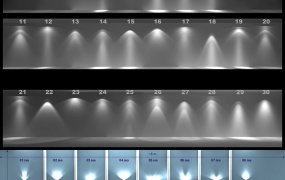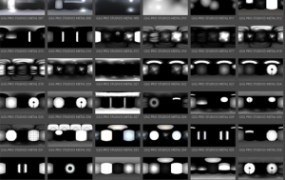C4D octane场景预设工程 conductive fresnel octane single Mat Octane

C4D: CUSTOM (CONDUCTIVE & DIELECTRIC) FRESNEL
Ever wondered how to get conductive Fresnel inside of Cinema 4D? Ever wondered what conductive Fresnel is after all? Look no further – we’ve got you covered.
Fresnel – that formula that drives the behaviour of reflections in Plastic, Glass, Paint – heck anything glossy. It was discovered by a french guy called Augustin Jean Fresnel and basically says “a given substance will reflect more light at a higher angle of incidence” or: “Use Fresnel’s formula to make things reflect more around the edges” (grossly oversimplifying here…).
Funny thing about Fresnel: There is actually more than one way to calculate that amount of reflected light. And the two main cases are for conductive (this will conduct electricity) and dielectric (this won’t conduct electricity) materials. The case we all know is the dielectric Fresnel. It’s awesome when modeling plastic, glass, porcellain or even shiny wood. But what about trying to set up copper, aluminum or gold with a fresnel shader?
It simply isn’t possible with the built in tools in Cinema 4D (at least not when relying purely on the tools that you’ll find in the material system). Even worse there also isn’t any conductive Fresnel in Octane. Xpresso and python to the help. What Octane allows you to do is to take a Falloff node, set it’s index to 1.0 (thus it becomes a linear falloff) and drive a gradient with this Falloff. What you have to “just” do now is set up your gradient so it drives the Falloff’s values according to the Fresnel formula.
Thankfully I didn’t have to come up with the algorithm to generate that gradient ramp. All I had to do was port it to Python & Xpresso. And here it is – I also included some presets. If you wanna dive into the code: It lives inside that Xpresso tag and inside those two python nodes. The first one is just there to take care of the preset values. The second node is where the actual calculation of the gradient happens.









评论0